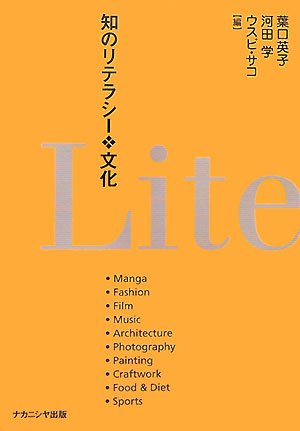- 著者
- 葉口 英子
- 出版者
- 日本マス・コミュニケーション学会
- 雑誌
- マス・コミュニケーション研究 (ISSN:13411306)
- 巻号頁・発行日
- vol.62, pp.116-133, 2003
The five-minute music program 'MINNA NO UTA' (Everyone's Songs), which has been broadcast on NHK since 1961, has contributed to the popularization of new children's songs. It has created about one thousand tunes, influencing musical education and popular music in Japan. This paper explores the characteristics and meanings of this program by focusing on its text as well as the processes of its production and consumption. My research involved conducting interviews with directors and distributing questionnaires to audiences. My aim is to explain the uses of this program by audiences through their everyday lives and how this TV program contributes to creating new children's songs. My conclusions are, firstly, that this program has a distinctive history that has been flexibly transforming songs into appropriate styles for children in the TV age. Secondly, these songs played a role in constructing a national collective identity for everyone (including grown-ups), especially from the 60s to the 80s, because these texts have functioned as 'national music' mediated by a state channel.
7 0 0 0 IR 昭和初期(1925-1937年)のラジオ番組『子供の時間』にみる音楽に関する考察
- 著者
- 葉口 英子 Hideko HAGUCHI
- 出版者
- 静岡産業大学情報学部
- 雑誌
- 静岡産業大学情報学部研究紀要
- 巻号頁・発行日
- no.10, pp.79-96, 2008
本稿は、日本放送協会発足時から始まるラジオ番組『子供の時間』にみる昭和初期(1925-1937年)の音楽をめぐるさまざまな活動に着目し、その内容と変遷を明らかにすると同時に、番組の生産、受容の場にみられる特徴を探り、ラジオという媒体を通じて、子どもと音楽がどのように関連づけられたかを考察するものである。『子供の時間』は、1925年から41年にかけて放送された教養番組であり、全国の子どもに向けて、教養・娯楽を提供するものとして始まった番組である。毎日夕方に三十分の枠で放送された『子供の時間』では、必ず歌や音楽のコーナーが設けられるなど、音楽は番組内でも大きな位置を占めた。その内容をみると、童謡・唱歌、和楽、洋楽、各楽器の独奏、うたのおけいこ、歌劇といった子ども向けの歌や音楽が数多く紹介されている。当初の番組では、音楽といえば童謡・唱歌のみで占められていたが、次第に歌劇・洋楽・和楽といった種類の音楽も加わり、バラエティに富んだ内容へと変化した。また、番組のテキストと連携した「特選童謡」のコーナーでは、一般の子どもたちが投稿する詞にプロの作曲家が曲をつけた童謡が生まれた。ラジオが一般にも広く普及しはじめ、地方放送局による自局編成が盛んな頃になると、地元の小学生や幼稚園児が童謡・唱歌の合唱団として参加するようにもなり、各都市で子ども向けの音楽に関連した団体の活躍がみられた。昭和初期の『子供の時間』が取り組んだ音楽をめぐるさまざまな実践は、子どもたちの音楽環境、音楽経験に影響を与えただけでなく、ラジオという媒体の特性を生かしながら、従来の学校教育とは異なる形で、子どもと音楽が結びつく新たな空間と場を提供したのである。
4 0 0 0 知のリテラシー・文化
- 著者
- 葉口英子 河田学 ウスビ・サコ編
- 出版者
- ナカニシヤ出版
- 巻号頁・発行日
- 2007
2 0 0 0 OA 昭和初期のプロレタリア童謡にみる階級闘争としての子どもの歌
- 著者
- 葉口 英子
- 雑誌
- 環境と経営 : 静岡産業大学論集 = Environment and management : journal of Shizuoka Sangyo University
- 巻号頁・発行日
- vol.22, no.2, pp.121-132, 2016-12-01
2 0 0 0 IR アニメにおける音楽と映像の相互作用--『AKIRA』を事例として
- 著者
- 葉口 英子 Hideko HAGUCHI
- 出版者
- 静岡産業大学情報学部
- 雑誌
- 静岡産業大学情報学部研究紀要
- 巻号頁・発行日
- no.13, pp.103-118, 2011
1 0 0 0 OA "みんな"の『みんなのうた』 : NHK音楽番組の生産・消費をめぐる一考察
- 著者
- 葉口 英子
- 出版者
- 日本マス・コミュニケーション学会
- 雑誌
- マス・コミュニケーション研究 (ISSN:13411306)
- 巻号頁・発行日
- vol.62, pp.116-133, 2003-01-31 (Released:2017-10-06)
The five-minute music program 'MINNA NO UTA' (Everyone's Songs), which has been broadcast on NHK since 1961, has contributed to the popularization of new children's songs. It has created about one thousand tunes, influencing musical education and popular music in Japan. This paper explores the characteristics and meanings of this program by focusing on its text as well as the processes of its production and consumption. My research involved conducting interviews with directors and distributing questionnaires to audiences. My aim is to explain the uses of this program by audiences through their everyday lives and how this TV program contributes to creating new children's songs. My conclusions are, firstly, that this program has a distinctive history that has been flexibly transforming songs into appropriate styles for children in the TV age. Secondly, these songs played a role in constructing a national collective identity for everyone (including grown-ups), especially from the 60s to the 80s, because these texts have functioned as 'national music' mediated by a state channel.
1 0 0 0 戦時下における子どもの歌 : 少国民文化と音楽
- 著者
- 葉口 英子
- 出版者
- 静岡産業大学
- 雑誌
- 静岡産業大学情報学部研究紀要
- 巻号頁・発行日
- vol.11, pp.209-222, 2009-03-01
